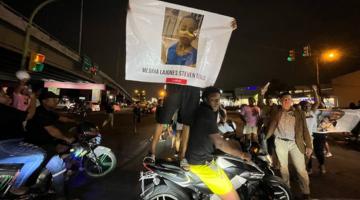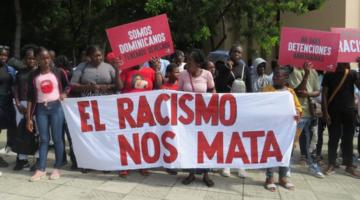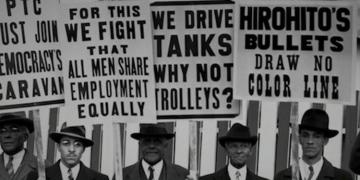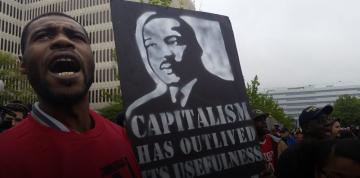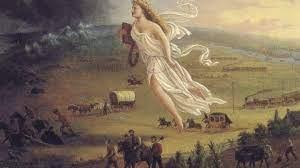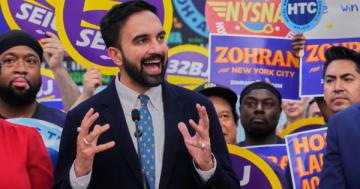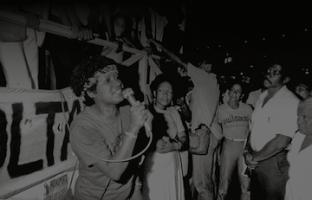On Afropessimism by Frank B. Wilderson III
Afro-pessimism theorizes slavery as a social relation which distinguishes Blackness as a paradigmatic position antithetical to humans.
“It is hard to be a slave and feel that you are worthy, truly worthy, of your suffering as a slave.”
How does one either narrate or deconstruct the story, and the crafting, of the “self” when the premises of narrative and of the existence of (human) being eclipse Black people by a paradigm underwritten by gratuitous violence? Put differently, how does one articulate the story of one’s self as a constant mode of absence? Frank B. Wilderson III’s recent text Afropessimism presents a feat against narration. Its seven chapters and epilogue convey through vignette, critical theory, poetry, ruptured memory, and prosaic madness the stories of one’s Black self as a constantly absented object, subjugated by what Frantz Fanon theorized as “negrophobogenesis,” what David Marriott, in Whither Fanon? Studies in the Blackness of Being (2018), interprets as Fanon’s psychoanalytic investigation of the “question of black corporeality,” which demonstrates how racism “has been formative not only of the genre and form of lived experience but also, more fundamentally, of the very notion of embodied experience itself.” An undoing and unfolding of revolutionary desires, alongside constellations of events witnessed and experienced by Wilderson during the mid to late twentieth century through the first two decades of the twenty-first, Afropessimism appears timely with its publication, due not only to its release in the midst of a global pandemic and tide of Black rebellion worldwide, but also to its arguments about the antiblackness of time and space.
“Wilderson conveys through vignette, critical theory, poetry, ruptured memory, and prosaic madness the stories of one’s Black self as a constantly absented object.”
A prolific scholar, creative writer, dramaturge, director of Reparations . . . Now (2005), and former member of the armed wing of the African National Congress, Umkhonto we Sizwe, Wilderson is best known among academic and activist circles around the globe as one of the progenitors, along with Jared Sexton, of the new, radical Black critical thought termed Afro-pessimism. What many international young scholars and political organizers have found resonant in this rubric of analysis, or lens of interpretation, regards Afro-pessimism’s theorization of the ways in which antiblack violence is the essential antagonism that undergirds civil society, or pointedly stated, violence against Black people structures civil society’s coherence. Influenced by the work of Black feminist thinkers such as Saidiya Hartman and Hortense Spillers, as well as Orlando Patterson’s comparative work on slavery, Afro-pessimism conceptualizes gratuitous violence against Black people as a regime of violence that cannot be analogized with the violence other non-Black populations experience. Critically, Afro-pessimism theorizes slavery as a social relation which distinguishes Blackness as a paradigmatic position antithetical to humans. Afropessimism is the third installment of Wilderson’s ongoing series of monographs, which elaborates the antagonism between the human and the slave, or Black, but represents a complex shift in Wilderson’s literary corpus by merging elements of political memoir from his previous book, Incognegro (2015) (a memoir stylistically similar to Assata Shakur’s autobiography), with the conceptual rigor of his theoretical text Red, White, and Black: Cinema and the Structure of U.S. Antagonisms (2010). The groundbreaking interventions encapsulated in his theoretical works have been shaped by his personal experiences of political militancy and as an object of racial hatred and ontological annihilation, and all of it coheres within this newest genre-bending text: one that forces questions of reading and interpretation no less than it raises questions of the meaning, and meaninglessness, of Black life in an antiblack world.
“Violence against Black people structures civil society’s coherence.”
Afropessimism is as much a theory of narrative as it is evidence of the constant state of disequilibrium that Wilderson describes as barring Black people from narrative. In this sense, Wilderson proffers conscious and unconscious intertextual references and interventions into how we can theorize African diasporic autobiography and memoir from the antebellum period (slave “narratives”), the Jim Crow years (Du Bois’s Souls of Black Folk, for instance), the Black Power movement (Assata Shakur’s autobiography), and Black internationalists (Winnie Madikizela-Mandela). The arc of narrative and its attendant cathexis of redemption is not unlike fantasies of love: promises of completion and coherence that override ethico-political truths that govern the antiteleological structure of the world. Wilderson’s text achieves an insurmountable feat, articulating a meta-memoir against the antiblackness of narrative. Black suffering as a fact of everyday Black life and social death endures narrative fissures and gaps, the routeless mapping of madness within the syntax of events: the piercing and woundedness it takes to craft a theoretical landscape in this genre-confounding project.
Although similar in spirit to the autobiography in the African American literary tradition, memoir and manifesto in the tradition of political prisoners such as Shakur, Jalil Muntaqim, and Madikizela-Mandela, the profundity of Wilderson’s interventions in memoir and theory come closest to matching The Souls of Black Folk, and the contemporary interventions of philosophical biography, metabiography, and the deconstructionist collaboration between Maurice Blanchot and Jacques Derrida in The Instant of My Death. However, unlike these previous texts and authors whose work invariably encompasses questions of meaning, especially the meaning of death—for the crafting of self, its effects on community, or questioning claims to truth and knowledge of the self and death—one of Afropessimism’s most devastating revelations concerns Wilderson’s fear, which is also to say the quintessentially Black sentient object’s fear, of a “death without meaning.” This meaninglessness is displayed from the onset of Afropessimism in Wilderson’s recounting of his mental breakdown and psychic awareness of himself as the Fanonian stimulus to white anxiety—the moment where his split Black psyche is aware of himself as a phobic object while also aware of his own compensatory gestures to manage others’ negrophobia—dizzying scenarios of what he outlines as both subjective and objective vertigo created by a world sustained by gratuitous violence.
“One of Afropessimism’s most devastating revelations concerns Wilderson’s fear, which is also to say the quintessentially Black sentient object’s fear, of a ‘death without meaning.’”
Yet, as much as the resonance of this book begins with the timing of its arrival during COVID-19 and Black Lives Matter rebellions around the world, the content demonstrates Wilderson’s argument that redemption as a feature of narrative—the eventual transformation of time into event or space into place—serves as a fantasy Black people entertain for complex, competing, and contradictory purposes. The fantasies of coherence and mastery, which conflicts such as capital, patriarchy, homophobia, sexism, settler-occupation, and colonialism render legible, emerge from one’s affective relationship to one’s own Black suffering. As Wilderson notes, “it is hard to be a slave and feel that you are worthy, truly worthy, of your suffering as a slave.” This worth, Afropessimism illustrates, is both material and psychic—a balm that sustains relations of violence, the relationality of relations of affiliation and filiation—in other words, categories and conceptions such as life, death, and value saturated in antiblack violence sustain the world in myriad phenomenological and abstract planes.
The timeliness of the text’s arrival, however, betrays the arrestation of time, or rather, how the coordinates of time, like space, are mapped according to a cartography that begins where a singular narrative neither exists, nor can exist, just as singularity is denied to the genealogical isolate who is structurally positioned as Black. Like the years that carved African bodies during the middle passage of the trans-Atlantic slave trade and the passage across the Indian ocean during the sub-Saharan trade, 2020 evidences an all too familiar time of ceaseless dying for Wilderson: the blackened, absented space and time both obfuscated by the veil of consent formulated in Gramsci’s theory of civil society and illumined by the ongoing terror of gratuitous violence against Black people. In other words, the mundane terror blackness experiences at the behest, or consent, of civil society is in no way inferior to spectacularized antiblack violence governed and ordained by political society. Whether in his interactions with a Marxist woman of color who is his colleague, a Palestinian co-worker, or a hippie white woman who is his neighbor, time’s coherence, at least at the level of our preconscious interests, cleaves at least to all but the staunchest liberal humanist or proud racist—twin levers upholding segments of the human family whose protestation to the contrary continues to galvanize global sanctioning of prosaic antiblack violence.
“Categories and conceptions such as life, death, and value saturated in antiblack violence sustain the world in myriad phenomenological and abstract planes.”
Notwithstanding, Wilderson unveils another tier, one that furthers the terror of the state and the social, that of counterhegemonic or so-called revolutionary factions in Western society: non-Black people of color, feminist revolutionaries, and LGBTQ folks who still operate within a paradigm that positions them as degraded humans, but human nonetheless. Put differently, violence, for Black people, totalizes the possibility of redemption, of temporal linearity, and the expectations therein that constitute the arc of narrative; humans, even those considered degraded as such based on ethnicity, colonial subjugation, gender, and sexuality, suffer under regimes of violence aptly suited for the telos of narrative, allayed by their positioning as non-Black, and whose suffering garners legibility within arcs, grammars, and temporalities denied to Black people. These same constituents, however, also benefit from the soothing that antiblack violence provides the world.
Still, contemporary and revolutionary politics (which currently betray, yet need not remain, mutually exclusive categories) buttress the mendacity of time in Afropessimism: the irrelevance of teleology, narrative, and the notions of progress that narrative arcs belie. The endless time of dying and the deathliness theorized by Wilderson through the interventions on libidinal economy—what Jared Sexton, quoted in Red, White, and Black, defines as “a dispensation of energies, concerns, points of attention, anxieties, pleasures, appetites, revulsions, and phobias capable of both great mobility and tenacious fixation”—and the purchase of antiblack scopophilia (pleasure in looking), edified by insights from Sexton and Marriott, are interspersed with the author’s recollections and personal engagements with figures and works spanning Assata Shakur and Jalil Muntaqim of the Black Liberation Army; the Black Panther Party’s Jonathan Jackson, Eldridge Cleaver, and the Panther 21; and Winnie Madikizela-Mandela and Chris Hani from the revolutionary war against apartheid.
“Non-Black people of color, feminist revolutionaries, and LGBTQ folks who still operate within a paradigm that positions them as degraded humans, but human nonetheless.”
Undoubtedly, liberation—from the oppressive political apparatuses of the state as much as the equally, if not more daunting, psychically oppressive architectures structured by violence—is the sine qua non propelling the ethical stakes of Wilderson’s theoretical and literary project of Afropessimism: love and war. From his early memories in an affluent suburb in Minnesota, watching the urban rebellions of 1968 on the tv with his grandmother at his side, Wilderson acknowledges that the moment they watched one of the rioters on the screen, “she and I were triangulated with that man . . . And I felt loved.” Love, here and throughout Afropessimism, fails to satiate Black political desire or what Wilderson deems the death of Black desire from the “life-affirming anti-Blackness” of coalitions, the “rhetorical structures, political desire,” and “emancipatory horizon” of “civil society’s junior partners (such as immigrants, White women, the working class).” Analogy between those positioned as slaves, or Black, and degraded humans, or junior partners in civil society, functions as an anticipated anathema within the structural antagonisms he outlines. This analogy is a ruse in Wilderson’s memoir, for the reader’s evasive withdrawal into complaint proves difficult for anyone conjointly interested in emancipatory politics, let alone current global affairs. Indeed, Wilderson’s following confession at the end of the book reveals the psychic costs, as well as the ethico-political stakes, of his paradigmatic analysis: “I was committing to make madness my refuge; to face the fact that my death makes the world a decent place to live; to embrace my abjection and the antagonism that made me Humanity’s foil. I would make my home in the hold of the ship and burn it from the inside out.”
Ultimately, Afropessimism places into relief the consequences of one’s understanding that madness, death, and the “hold of the ship” are the here, now, and heretofore all at once, until the world we understand within this current symbolic order ceases to exist. Hence, the popular analogy of loss—especially during a time of mass grief over COVID-related deaths, separation of families due to the violence of immigration detentions and border patrols, incarceration, forced quarantine of elder care facilities, isolation in prisons and jails, or self-imposed restrictions on touch, care, and gathering with friends, family, and loved ones—fails to articulate the substance and gravity of Black suffering. Depending on one’s familiarity with Afro-pessimist theory, Wilderson’s memoir reminds some of and introduces others to the essential distinction between loss and absence. Wilderson’s experiences in Minnesota, California, Johannesburg, and New York City describe what Marriott calls the “deathliness that saturates life,” “what makes social death something more surreal than the end of breath.”
New York: Liveright, 2020. 368 pp. $18.95, paper.
Selamawit D. Terrefe is an assistant professor of African American literature and culture in the Department of English at Tulane University, where she also holds affiliations with the Africana Studies Program and Stone Center for Latin American Studies. Her work has appeared in The Feminist Wire, Theory and Event, Rhizomes, and Critical Philosophy of Race. She is currently completing her manuscript, “Impossible Blackness: Violence and the Psychic Life of Slavery,” a comparative analysis of African and African American texts, which examines the fantasies harnessed within the global imaginary that elaborate antiblack racial violence into narratives of possibility.
This article previously appeared in The Georgia Review.
COMMENTS?
Please join the conversation on Black Agenda Report's Facebook page at http://facebook.com/blackagendareport
Or, you can comment by emailing us at comments@blackagendareport.com

